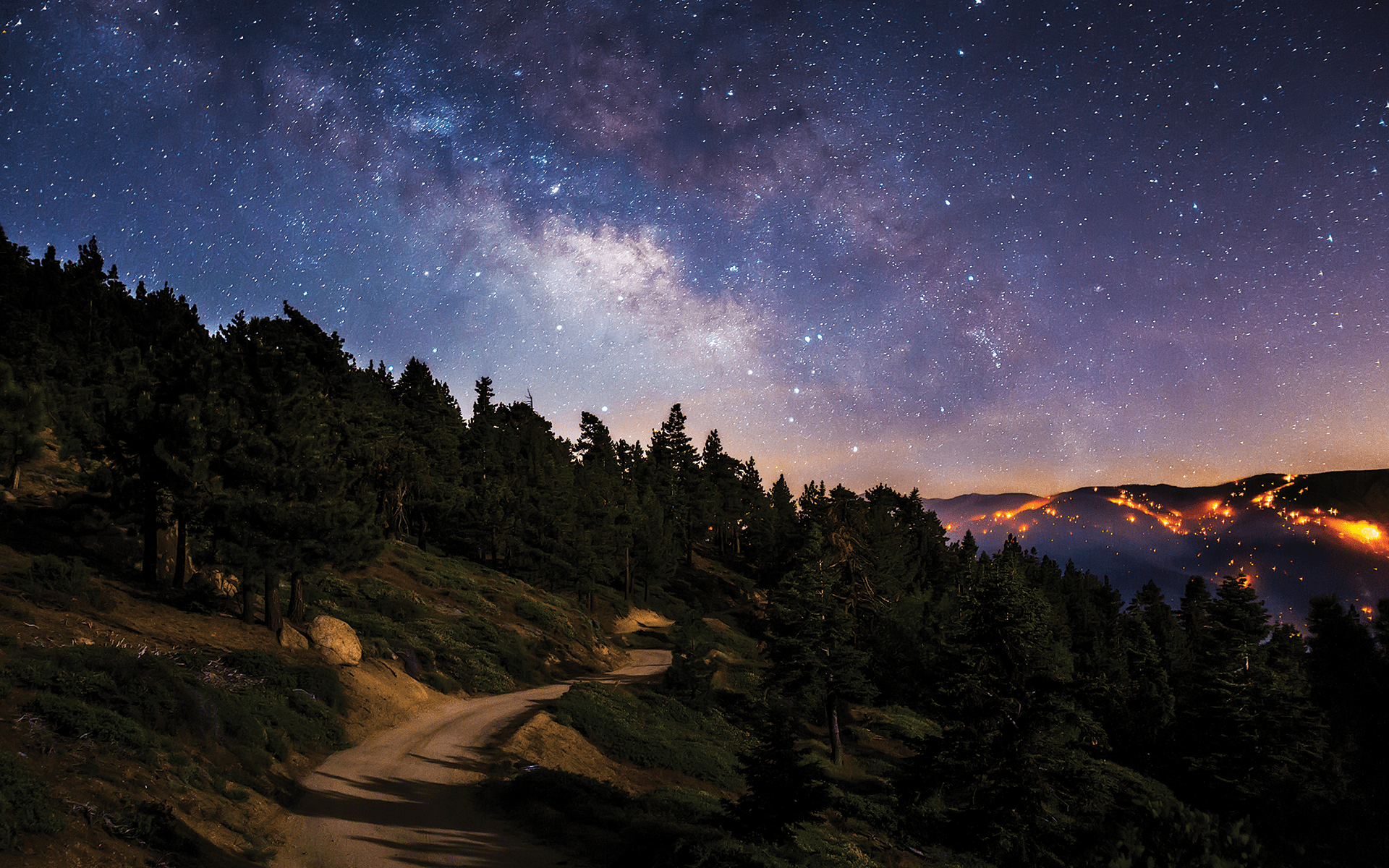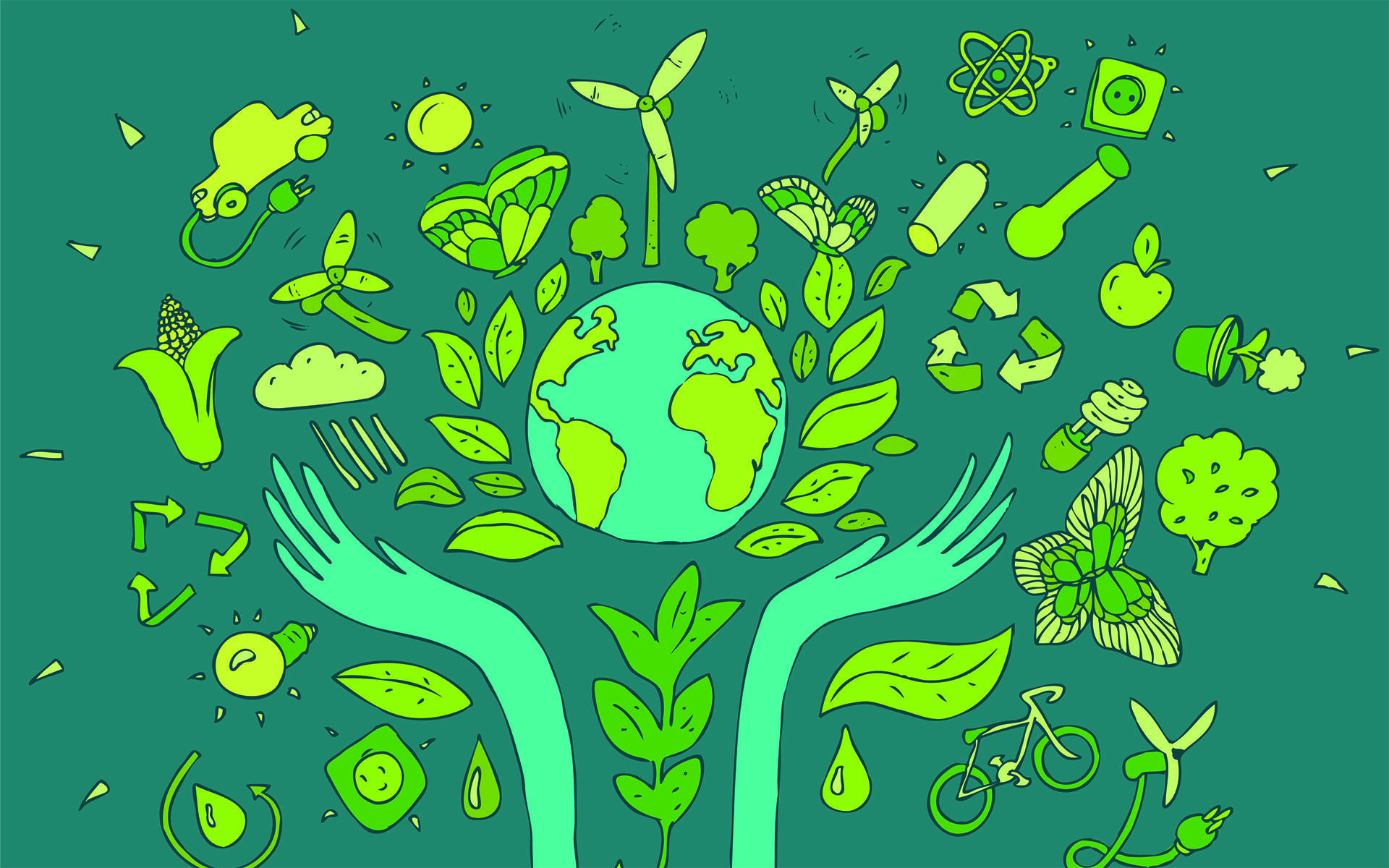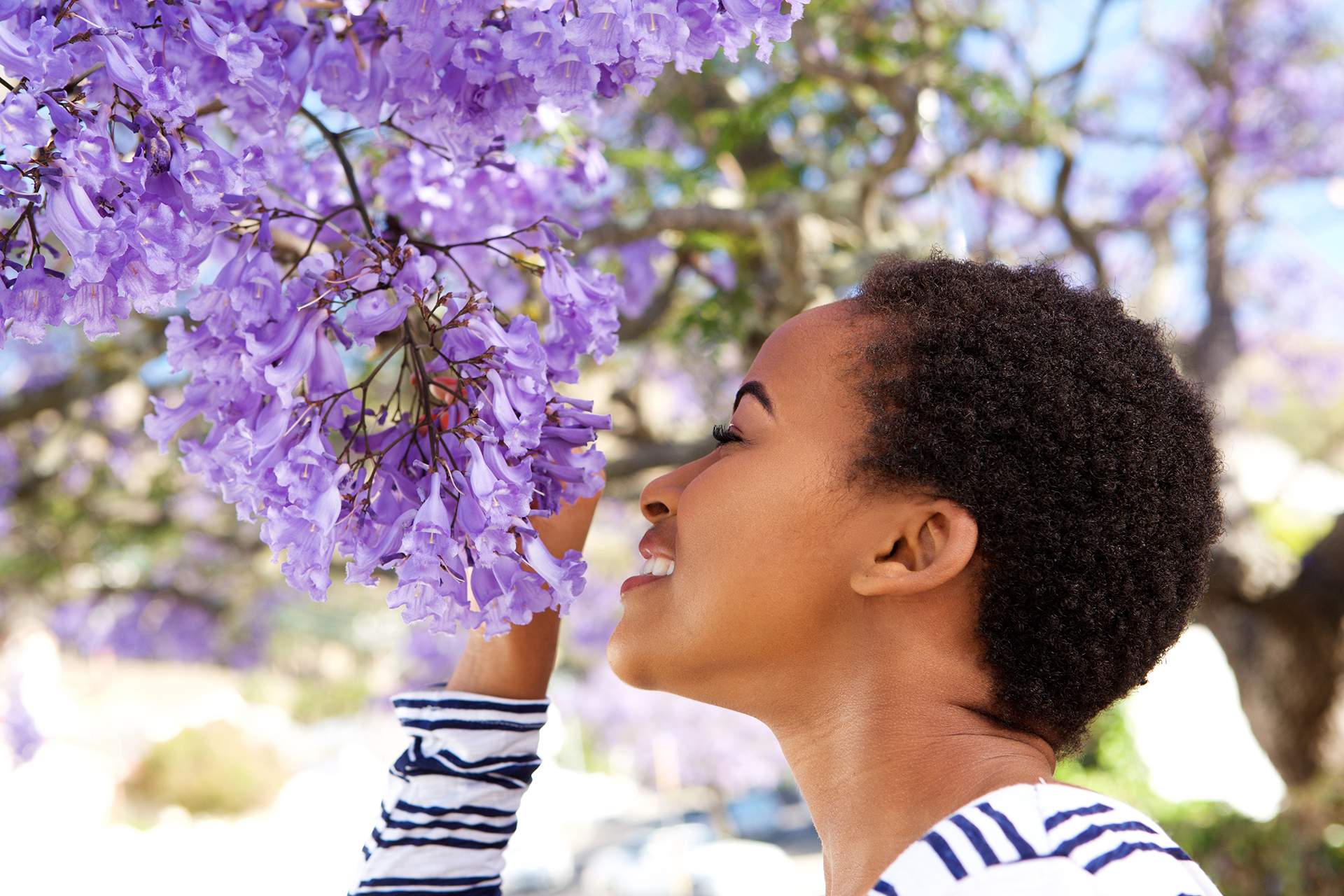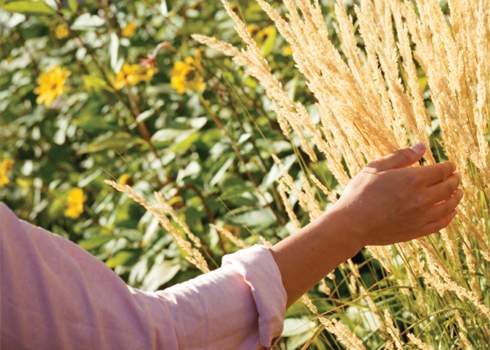It has been a long day at my desk, staring at a computer; my brain cells feel wrung dry with too much cogitation. Late afternoon, the fog has lifted on the hilltops above my house and I decide to venture out on a hike to clear my head and connect with what I love most: this pulsing earth.
As I start out on one my favorite trails, it takes a while for my senses to open up, but soon I feel embraced into a luminous world, welcomed by innumerable shades of green, tall grasses shimmering, trees swaying in the breeze, and shafts of sunlight peering through the thick canopy. Below me, a family of quail dart in and out of the bushes.
As I crest the hill, I feel the invigoration of the cool wind, blown in fresh from the Pacific. I inhale deeply and smell the bite of the salty ocean air, which feels like a homecoming, familiar and welcoming. It seems to blow the dullness from my mind, and I sense how nature invites us to connect and feel our way into a larger sense of self.
We tend to think of consciousness as skin bound, brain tethered. However, in nature we can sense something vaster—and that something larger senses us. And from here our perception and understanding transforms: We start to think from this bigger perspective.
Mindful Awareness in Nature
For over 15 years, I have led Awake in the Wild retreats in places such as the islands in the Sea of Cortez in Baja, Mexico, the Sierra Nevada mountains in California, and the red rock canyons in Arizona. Participants immerse themselves in the beauty of wilderness for a week of silence and meditation and become transformed by the process. Through the portal of mindful awareness, they are developing an intimate connection with the natural world that is both sublime and insightful. They come to sense how embedded they are within the fabric of life and its ecosystems.
I teach my nature-based meditation work, in part, because we have lost the art and ability to know how to be in nature. We are mostly busy doing nature. We are conquering the mountains, beating our best time on a run, chatting with friends on a walk, listening to music on headphones, or simply spaced out, daydreaming or lost in thought.
Although I believe any time in the outdoors is time well spent, what we do with our mind while we are outside is significant. With mindfulness training, we learn that in any moment we can shift attention from the stress-inducing thought realms—the brain’s default mode network—into the visceral present. We can attune to our senses and see how they support present-moment awareness. We realize the body and its sensory nature are always present. By practicing outside, we discover how nature constantly allures our awareness to its beauty, complexity, diversity, and simple miracles. Or we can discover what Wendell Berry notes in his poem “The Peace of Wild Things” as he steps outdoors: “For a time I rest in the grace of the world, and am free.”
Nature’s Invitation
Nature also provides innumerable counterpoints to stress. For our cramped, pressured, cubicle lives, we can feel a magnificent sense of space as we behold the boundlessness of the night sky or the vastness of the ocean. For our senses—dulled by screens and monotone offices—we can drink in a thousand colors of the pebbles and sands at the beach or shades of green as we walk in the woods.
For the pervasive anxiety and stress that runs through our nervous system, we can access the tranquility of trees, streams, and wildflower meadows. We can attune to the gentle deer who embody a grace and dignity as they move through a landscape. For our heart made heavy by sadness and grief, we can be touched and comforted by the simple joys of bluebells blooming in woodlands, the fleeting hummingbird as it floats by, or the billowing clouds lit up at sunset.
Nature’s teaching also provides a perspective that we all too easily forget. As we watch scarlet maple leaves drop in the fall, it reminds us of the importance of letting go, of release. Walking in a woodland in the dead of winter, we behold the natural rhythms of dormancy, and remember there are seasons of flourishing and times to rest and rejuvenate. Seeing fields of once-golden blooms of sunflowers now withering in autumn, we remember that beauty and joy also have their seasons, their ebb and flow.
Nature always invites our attention and offers so much to our depleted hearts and minds. The question now is: Will we accept the invitation?
Nature always invites our attention and offers so much to our depleted hearts and minds. The question now is: Will we accept the invitation? What’s at stake if we don’t is not just our personal well-being. Our collective health—and perhaps even the survival of our entire species—seems to hang in the balance.
Feeling the Reality of Change
As I continue my hike along the crest of the hill, I suddenly realize the view is not the crystal clarity I have come to expect. There is a haze in the valleys below, blurring boundaries and obscuring the horizon. I begin to smell an acrid smoke that strangely blows in from the ocean. The smoke comes from the raging fires further north, burning in the Pacific Northwest and British Columbia. Although originating more than a thousand miles away, these plumes, carried by Pacific thermals, blow into California. It is the all-too-constant reminder that not all is well in the world, however beautiful the nature that surrounds me.
Today, because of climate crisis and changing ecology, the sense of finding nature as source of nourishment is changing. We now live in an era where the impacts of global warming—unprecedented forest fires, species extinction, coral reef deaths—are impossible to ignore. Our very experience of nature is tinged, if not marred, by these looming realities.
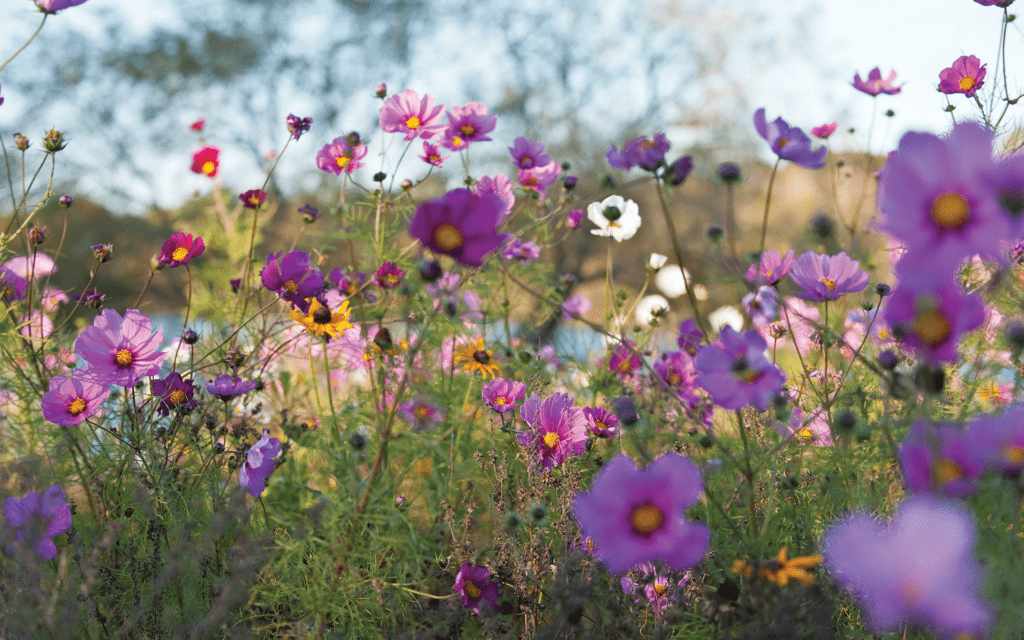
I have hiked in three mountain ranges in 2018: in the Rockies, the Sierra Nevada, and the Alps. In each place I walked, visibility was affected by a smoky haze from nearby or distant forest fires. In the same year, California witnessed two utterly tragic fires. One, the Camp Fire, incinerated the entire town of Paradise, destroying up to 18,000 homes, forcing more than 52,000 people into some phase of homelessness. Simultaneously, the Woolsey fire, near Malibu, ravaged hillsides and homes alike. The Camp Fire spewed smoke that stretched for hundreds of miles up and down California, blanketing entire cities with toxic smoke. It was described as the hottest and fastest moving fire in history. The intensity fueled by the drought conditions were a direct result of climate change.
Similarly, friends who like to snorkel and dive lament the diminishing coral reefs. Alpine climbers witness the high mountain glaciers disappearing year after year. Oceans that were once teeming with fish are now depleted. The remaining fish drift in gigantic garbage patches, some as large as the state of Texas.
Our grief and pain about such things is harder to push aside. The results of the climate crisis are mounting, becoming an enervating presence where once we drew pure pleasure and deep replenishment. Instead of relishing the majestic trees, abundant wildflowers, or breathtaking views, we confront drought conditions, flooding, or the smoky haze of distant forest fires. Our heart may feel heavy and weary or helpless at the scope of the problem.
The Australian eco-psychologist Glenn Albrecht coined a new term for this: solastalgia. It is a part of an emerging lexicon in the mental health field that endeavors to address the distress and anxiety that occurs in relation to the ecological crisis. Solastalgia, composed of two Greek words, solacium (comfort) and algia (pain), refers to the distress caused by environmental damage and speaks to the grief, sadness, and despair that arises in response to the current environmental devastation. Instead of joy there is a hopelessness, a knowing that what is loved is now under threat.
People feel solastalgia in response to mountaintop mining from the Blue Ridge Mountains to Western Australia. It is felt when one sees the vast forests in the West scorched by fires. It is stirred when there are mass beachings of dolphins or whales or when blooming red tides in Florida stifle marine life. Sailors feel it when drifting past islands of plastic in the Pacific. Farmers know it in their bones when droughts crush their wheat harvests.
When I recently came across this term, it articulated something I’ve felt for some time. It speaks to my changing experience in nature. In the past, nature had always been an unending source of nourishment, joy, wonder, and love. Now it is often tinged with sadness, grief, or loss at what is happening to species, habitat, oceans, and rivers. It is now impossible to ignore. What does this mean for countless people who have gone to the woods for refuge and resilience? What are the dire consequences for vulnerable peoples and species the world over?
Of course, I am also aware this grief is not new. Indigenous cultures and First Nations peoples have felt it for centuries. They have and continue to witness ecological devastation of their homelands through land confiscation, drilling, mining, deforestation, and the monocrops of agribusiness. They perhaps are more vulnerable to the consequences of climate change, whether that be declining fish stocks, melting ice in the Arctic, or changing migration patterns. Our current tears are part of a river of tears that has been flowing for a long time.
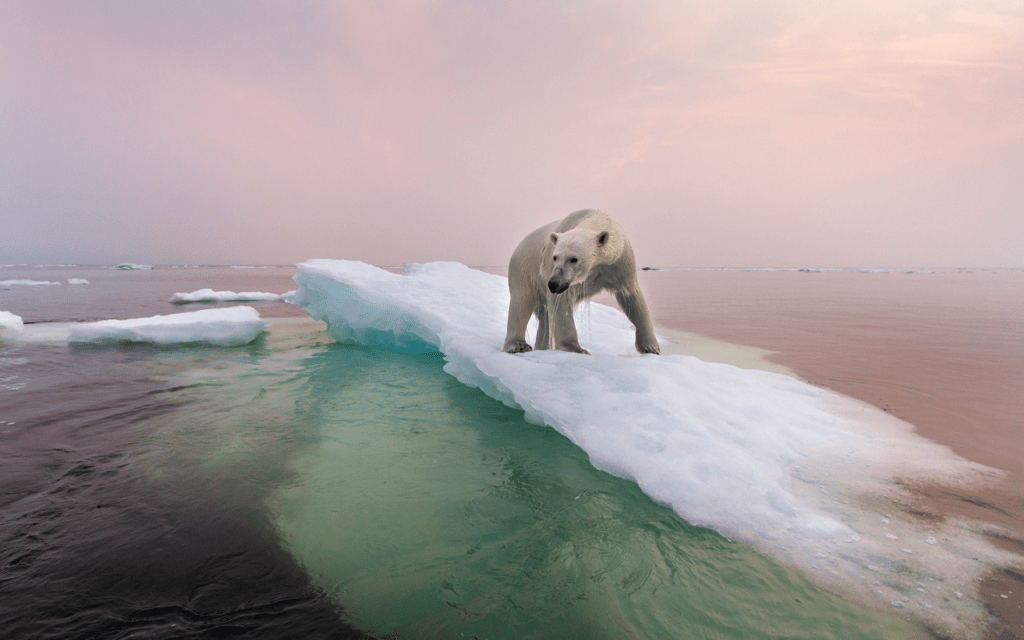
Practice with Paradox
For me, as for any nature-loving meditator, this presents a challenging dilemma. How do we continue to open our hearts to the beauty of the natural world when doing so means we also feel the deep pain of losing what we love?
As I sit by the ocean, I can revel in the silky surface of the water, the light catching the crest of waves, and be mesmerized by its restless beauty and vast power. Yet I also can’t help thinking of the creatures that lie within it: the diminishing shoals of tuna and dwindling populations of porpoises.
Whenever my heart feels torn in this way, I remember that where we habitually place our heart and mind becomes our natural inclination. What we focus on determines to some degree our sense of well-being. We can’t ignore the ecological crisis. We are here because society has refused to look squarely at this complex problem. However, does it serve the greater good to dwell only on the catalog of data about climate change? Such single-pointed focus can lead to despair, hopelessness, and worse.
On my walk I can dwell on the smoke, the acrid smell, the diminished visibility, and the destruction those fires bring. Or I can shift my attention to what is not burning up. To the Indian paintbrush flowers at my feet on my walk, or to the wave of pelicans who fly in exquisite formation along the coast. I can take in the elegant trees that reach their limbs skyward and the beautiful eucalyptus bark that peels like skin, while their leaves cast a dreamy, shadowy light upon the lush undergrowth.
Mindfulness teachings point us to meet the present moment as it is: We behold both the beauty of nature and the devastation that is occurring. We see the folly of overly romanticizing the past or drowning in doomsday scenarios of what’s to come. We hold predictions about the future lightly, however certain they’ll appear, as we can never know for sure what may unfold.
The question I hear from many people is: How do we hold the pain of the earth at this time? My answer is simply to grieve. To let yourself feel the depth of the pain and let the tears flow.
In learning the power of inclining our mind, we can also turn our attention to the tremendous number of constructive solutions that millions of people around the planet are working on. Organizations around the world are figuring out how to remove plastics from the ocean, draw carbon from the air, restore habitat for tigers in Nepal, and clean up the Ganges river. The list of businesses, municipalities, and nonprofits crafting creative solutions to the climate crisis is vast and increases every day.
These times require our mindfulness practice to hold a wide view. It asks that we hold the harsh reality of the eco-crisis, the beauty of what is still here and thriving, and simultaneously the uprising of ordinary people working all over the planet to steward, protect, and preserve the earth in sustainable ways. I have walked through scorched forests. I can look at the blackened trunks and feel a tender grief. And I can also focus on the emerald green shoots that rise out of the ashes. Both are true. Both demand our attention.
To be awake today is to learn how to hold paradox in your mind and to dwell in ambiguity. Indeed, the question I hear from many people is: How do we hold the pain of the earth at this time? My answer is simply to grieve. To let yourself feel the depth of the pain and let the tears flow. Allowing grief to move through allows movement and a responsiveness to rise out of those tear-stained ashes. It helps melt the frozen numbness that thwarts effective action.
We Protect What We Love
On my wilderness courses, I tell attendees that the basis for the Awake in the Wild meditation practice is summarized in the phrase: “We protect what we love.” When we bring meditative awareness to something in nature, like a baby sparrow in her nest or the first snowdrop flowers emerging from a long winter, we can discover our heart blooms with tenderness. It is sometimes what restores our humanness.
It is precisely this love, this open-hearted connection that is the basis for personal resilience and sustainability on a macro level. When we see how this beautiful planet, its creatures, and ecosystems are threatened, our heart galvanizes an active and sometimes fierce response, in the same way a mother bear will fiercely protect her cubs against threats. It is love that helps summon strength and passion to steward the earth. However, to feel that love necessitates we have intimate contact with the natural world. And it requires that we listen to the pulse of our own heart.
This reminds me of the story of John Seed, the Australian author and activist. He received a call some years ago from a friend inviting him to join protests in a section of rainforest near his house in New South Wales. A timber company was trying to clear-cut old-growth forest, and people came to stop the loggers until a court order could take effect.
Not being a natural protester, John found himself at the front of the demonstration facing huge bulldozers and logging trucks. What happened next surprised him and radically changed his life. Rather than thinking it was he, John, who was protesting, he realized it was the rainforest moving through him that was protesting the logging. The forest was acting through a larger ecosystem—via John—to protect itself. Such moments of insight shatter our illusion of separation and individualism.
My hope is that perhaps as we spend more time in the wild, attuned to the beautiful yet fragile natural world, we will, like John, be moved and feel the earth moving through us as part of a healthy ecosystem, to protect itself. And that, perhaps, we will learn to explore the paradox and ambiguity, to feel both the beauty and fragility, our deep nourishment and devastating losses—as we grow an inner resilience and outer sustainability to support what we love.
READ MORE
Two Mindfulness Practices to Connect with Nature
Celebrate Earth Day by tuning in to the rhythms of the earth.
Read More
A Guided Practice to Invite Nature Into Your Life
Mindfulness teacher Kelly Barron leads a practice for connecting with nature wherever you are.
Read More
3 Ways to Reconnect With Nature
If the closest you get to nature is an image on your screen saver, science recommends getting a better dose of green. Here are three ways.
Read More


